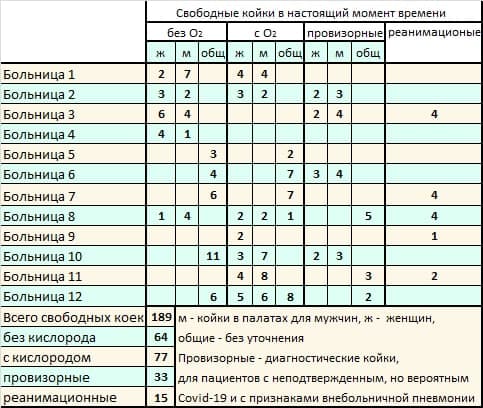Part 1. A bit of history
During the pandemic, when pictures of ambulances at the entrances to hospitals appeared on social networks, many began to suspect that something was wrong in our healthcare system. The situation was aggravated by the fact that the dispatchers of the ambulance stations did not have accurate information on the availability of free beds in the infectious diseases departments of hospitals. It was not always possible to get through to the doctors on duty at the scheduled time, the phones in the infectious diseases wards literally "melted" from the calls. Ambulance teams traveled from one hospital to another, in a "Brownian motion" format, to transfer patients to hospitalization.

Photo source: Rossiyskaya Gazeta
It depends on the ambulance dispatcher how quickly the patient is hospitalized. It is important to know the fullness of all beds, to monitor their release and the deployment of new beds, that is, to be aware of changes in the bed fund. The Medical Information and Analytical Center has begun solving the problem of providing the health care system with operational information on the availability of free beds in real time.
Part 2. Formation of a hypothesis
Traditionally, our budgetary sphere solves problems in conditions of lack of finance (expensive) or time (long). We didn’t have either one or the other, so we collected it from what we have.
The task was to speed up the collection, processing and provision of information to ambulance dispatchers on the availability of free beds in infectious disease wards. At the same time, it is advisable to exclude the communication of dispatchers and doctors on duty by phone, since we have already found out that during periods of high workload on hospitals, it is more difficult for dispatchers to call doctors. It was necessary to create fast ways of transmitting information about the occupancy of different types of beds.
When a patient is hospitalized with a respiratory infection, the type of bed they will be placed on depends on their condition. The hospitals have beds without oxygen equipment, beds with oxygen equipment, resuscitation beds with mechanical ventilation and provisional ("diagnostic beds", in separate wards for patients with an unconfirmed diagnosis and signs of community-acquired pneumonia). The next step was to work out the interaction algorithm and the information transfer mode.
To solve this problem, there was a hypothesis, which I immediately began to test in combat conditions.
Part 3. Patient routing with Telegram and Excel
Round-the-clock interaction of ambulance dispatchers, hospital attendants and management was organized through a group in Telegram. The attendants sent messages to the chat with the name of the hospital, the number and type of free beds. The operator on duty summarized the information in an Excel spreadsheet, copied and uploaded to the chat. It was already available in the chat as a graphic image.

The working model, assembled on the knee from "sand and sticks", turned out to be surprisingly viable. The time for deciding where to hospitalize a patient has decreased. This was the prototype of the information system, where tables in Excel are a DBMS, an operator who enters numbers into cells is a web application, and a picture in a chat is a graphical interface.
Part 4. Result
The chat of doctors and ambulance dispatchers began to act as a traffic controller at a busy intersection and was convenient for statisticians when preparing reports. Over time, he was transferred for round-the-clock administration to one of the medical institutions.
The next step in the development was the creation of an information system, where the role of a person who manually changed the numbers in the table and put it in a chat was replaced by a web application. The advantage of the approach was that all processes were tested, the history of the group perfectly complemented the terms of reference for the development of the system.
What happened next?
, , . -, , .
. , , .
. , , .